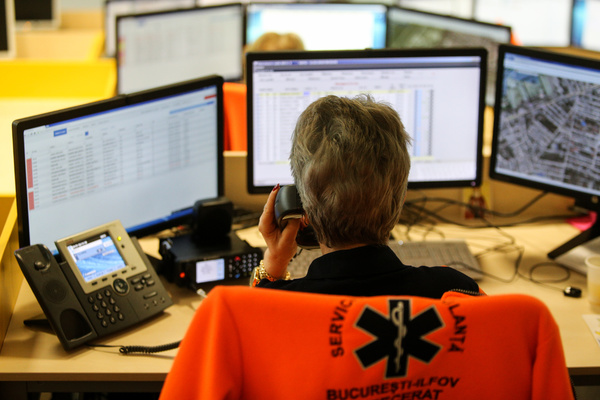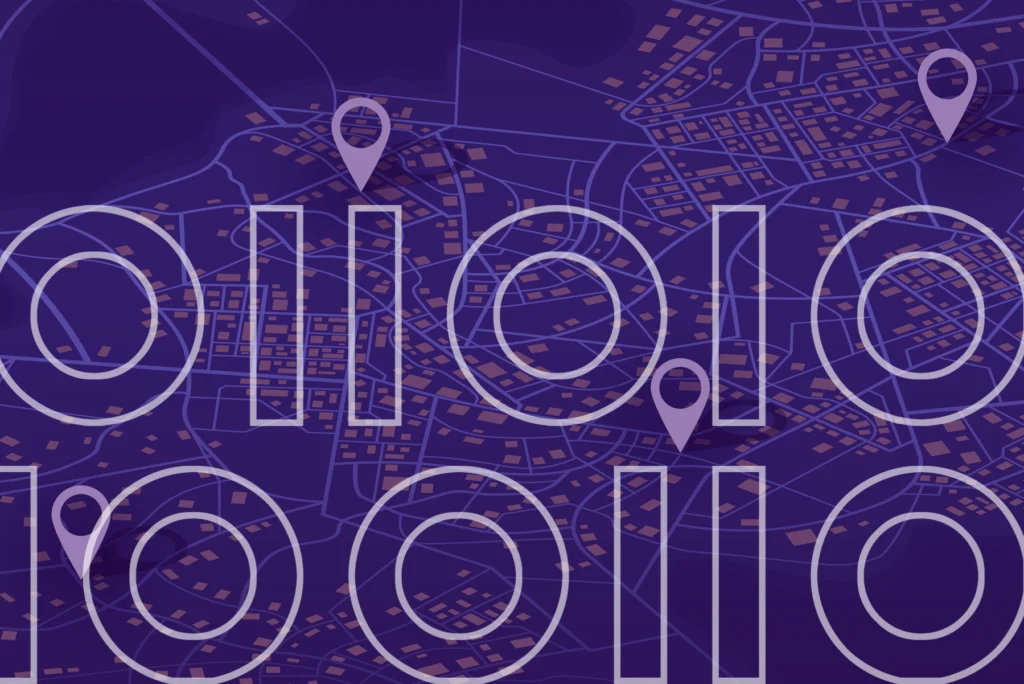Forward geocoding or typically known simply as “geocoding” refers to the process of identifying a specific location based on a street address. In other words, the process converts a street address to a specific latitude and longitude. In contrast, reverse geocoding starts with a specific location (that is, latitude and longitude coordinates) and determines the nearest street address to that point.
With the rapid increase in the use of mobile devices, IoT sensors, and other location-aware technology, both geocoding and reverse geocoding are increasing in importance. Those trends, combined with increasingly powerful geocoding capabilities, are opening the door to new possibilities in customer service, marketing, and even emergency services. Let’s look at a few examples of how these technologies are changing the way businesses create value and interact with their customers.
Geocoding: Where is this address?
Street addresses are highly variable and can often be imperfect. Many roads and streets, for example, may be referenced by multiple names. A store located at “150 Amherst Street” might also refer to its location as “150 Route 101A.” Further variations may arise from the use of abbreviations (“Route ” vs. “Rte.”, for example), or from slight differences in the way people choose to fill in the details (e.g. “101A” vs. “101-A”).
Errors and omissions, likewise, can lead to confusion or limited information. Customers filling out an online form will often take shortcuts, which can lead to incomplete address data. The best geocoding software can resolve even the most cryptic of addresses to an actual location. For example, Precisely Spectrum Geocoding is capable of operationalizing “1 100 #1 10025” to an actual address at “1 W 100th Street, Frnt 1, New York, NY 10025-4857.” That, in turn, can be identified as a specific location, with precise latitudinal and longitudinal coordinates.
The ability to accurately operationalize an address and identify its exact coordinates opens the door to a great many possibilities. By linking the location of an address to a unique and persistent identifier (which we call the “PreciselyID”), we can begin to associate that location with over 9,000 additional attributes including weather, crime statistics, property values, traffic, and consumer variables. Location context adds vast new dimensionality to the information you have about your customers, competitors, and the world around you.
This enables companies to develop a more complete view of their customers, opening up new opportunities for marketing, reaching the right audience at the right time with the right message. It helps retailers to better understand neighborhoods, traffic patterns, and competitive dynamics. It ensures that businesses clearly understand jurisdictional boundaries so that they can maintain accurate tax records and avoid fines and penalties from government agencies. It assists first responders in reaching the people who need their help in an emergency as quickly, safely, and efficiently as possible.
Read our eBook
Geocoding for Business
Whether your organization is seeking to enhance location-based marketing or roll out entirely new innovations built upon location intelligence, Precisely can help. Learn more about how Precisely’s geocoding solutions can help you create new value in your business.
Use cases for reverse geocoding
The most common use cases for reverse geocoding revolve around mobile devices, for example, by retrieving GPS coordinates from a customer’s mobile phone, pinpointing that person’s location, and translating their geographical coordinates to a specific address.
Most businesses are familiar with the idea of location-based marketing. This often begins with reverse geocoding, in which a mobile device transmits a customer’s current location which is resolved to an address and used to identify potential services that may be of interest. A business traveler, for example, might already have expressed their preferences for particular types of cuisine by “liking” one or more sushi restaurants in their home area. A marketing algorithm could match this preference with the customer’s current location and make recommendations about surrounding restaurants that might appeal to her.
Some use cases have far more serious implications. For example, 911 emergency services can identify your location when you call a dispatcher for help. In many cases, a distressed caller may be unable to describe their exact location or may even provide incorrect information. Reverse geocoding uses a mobile phone’s GPS coordinates to pinpoint the exact location from which a 911 call is being made. This provides critical information to ensure that emergency services can be deployed quickly to exactly the right address. In this case, reverse geocoding could mean the difference between life and death.

Enterprises are discovering new and innovative ways to use reverse geocoding, enhancing business value in the process. For example, financial services companies have begun to use reverse geocoding to aid in detecting and preventing credit card fraud. When a credit card is presented at a point-of-sale (that is, by swiping or inserting a chipped card into a machine), it follows that the cardholder should be at that same location when the transaction happens. If the cardholder’s cell phone location can be confirmed to be at the same address, the likelihood of fraud is presumably low. If, on the other hand, the cardholder’s phone and credit card are in different locations, then the potential for fraud may be present.
Whether you are using forward geocoding or reverse geocoding, precision matters. The best geocoding solutions are the ones with the most extensive geographical reach and the most specific and accurate reference datasets. Reverse geocoding benefits from having a comprehensive coverage of address point data to accurately determine “what address am I closest to” and “what business is at that address” for specific business requirements.
Speed also matters; an enterprise geocoding solution should be capable of returning results within milliseconds and scalability is important. To deliver bulletproof results at scale, a geocoding solution must be able to scale to respond to large processing needs.
Whether your organization is seeking to enhance location-based marketing or roll out entirely new innovations built upon location intelligence, Precisely can help. We are the world’s leader in data integrity, including location intelligence and enrichment.
To learn more about how Precisely’s geocoding solutions can help you create new value in your business, download our ebook, Geocoding for Business: Five considerations for selecting a geocoding solution to support a winning location intelligence business strategy.







